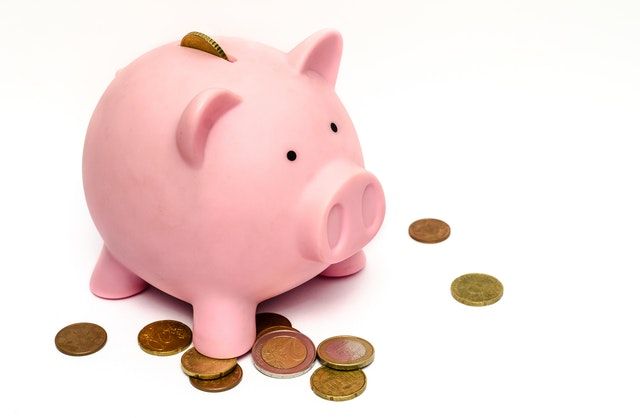Saving and Investment
Money is something we are all familiar with but may take for granted. Learn how to save and invest so that your nest egg can grow and take care of itself.

Over the past year I have been learning about saving and investment and want to relate my experience to solidify the knowledge that I have gained. This series of posts will be a journey from the absolute basics of investing to some of the more tricky concepts such as options and futures.
This post outlines my basic plan for the series starting with a short essay on why taking control of your saving and investments is so crucial for everyone to do. I’ll cover the basics of compound interest, inflation and introduce why stock markets are usually considered better investments, despite the elevated risk.
The key to a successful investing career is long term planning. Make a plan that fits your risk profile and stick to it for the long haul, with regularly scheduled reviews to ensure that you are still on track. Don’t sell at the first sign of the market dropping and don’t be afraid to buy when it is falling. Learn about dollar-cost averaging and how it can help you build a decent investment portfolio.
What is risk anyway? I’ll take a look at some of the risks that affect big companies and small investors and describe the concept of a risk profile. We will look at what different risk profiles mean in terms of an investment strategy and how regularly your risk profile should be reviewed.
The rest of the series will build up an investment plan that looks at how to purchase the wide range of investment options out there: stocks, bonds, options, futures, mutual funds, index tracking funds, and many more. We will talk about where each falls on the risk profile plain and also about the level of expertise required to begin investing in them.
Along the way there will be other topics to discuss, like the concept of market frenzy, how to read financial statements, what to look for in a good investment, where to get the best information and maybe we will even talk about tax planning.
Why Save?
If you are reading this then you have probably already decided that saving is important so we won’t dwell on the subject for too long. Many people use credit and loans to fund their lifestyle, adding debt onto credit cards until they are swimming in financial trauma. Saving for things you want to buy or do is the alternative.
There is an element of delayed gratification involved; you cannot enjoy the fruits of saving until you have all the money in your account (or under the mattress or in the coin jar – whatever approach you use, it’s still saving). This is the thing most people have trouble with. If you want that big family holiday, that new car or expensive jewellery, save for it.
Don’t be tempted to dip into savings for something you just saw. Make a plan and save. By the time you have the money, you can objectively say whether you really want it or not. Maybe all that saving will change how you feel about the target and you will find that you can do without it.
Another good reason to save is to ensure that you have funds set aside for a rainy day. It could be that you or a loved one needs an urgent medical procedure that is not covered by insurance or to tide you over while out of work, or waiting for an insurance claim to come through. No point dwelling on what disasters might happen; start saving to have a small lump sum available for emergencies.

How to Save
The good thing about saving is that it can be easy to do – just go into your bank and open a savings account with a standing order to take money from your current account on every pay day. If you are on welfare, you can still save; open a savings account and commit to depositing money there each week. Even a few Euros, pounds or dollars per week will soon build up. Students can save too! Put all your change into a money box and don’t dip into it until the end of term.
The problem with this form of easy saving is that you will not earn any or much interest on the savings. You would be fortunate to find a savings account offering half a per cent of interest at this time. Inflation will eat away at your savings even as they keep growing.
Inflation is the effect that changes the value of money over time. Things cost more money as time goes by, not because the quality has improved, but because the value of the money exchanged for them has gone down. There are many causes for inflation which we will not venture into, but it is important to know about its effect and how it changes the buying power of your savings.
The rate of inflation is tracked by economists and governments. They don’t want it to be too high (causing devaluation of currencies) or too low (causing stagnation). Rates are published regularly, for example, the rate for Ireland in 2019 was 0.94%.
If you have money in a savings account with an interest rate lower than this figure, it is likely that the buying power of your money will go down over time.
Rule of 72
Maybe you don’t care about interest – as long as you have a nest egg growing you will be happy. But you are ignoring the important effect of compounding to help grow those savings.
The rule of 72 is simple tool to figure out how fast your savings or investment will grow given a rate of return. Imagine you took a time machine back to the 1980s when interest rates of 10% were common. The rule shows how soon you could double your investment with the compounding effect. Divide the number 72 by the expected rate of return to get the number of years to double the investment. For 10% interest rate this would be just over 7 years.
Now look at today’s climate where the interest rate is usually no more than half a percent. It would take 142 years at that interest rate to double the initial sum. Are you planning to live that long?
Other Options
That’s why we need to investigate other investment options. Our attention will first be drawn to the stock market. Historically it has given average returns of about ten percent over ten year periods, including income from dividends and price growth.
However, the stock market also has much higher risk. You need to learn what tolerance you have for this risk. You also have to be aware of the cyclical nature of the system, and that you may have to leave your investment in there for a long time to get the expected average rate of return.

There is still the possibility that individual stocks you invest in will go completely bust, leaving you with nothing. Investing in mutual or index tracking funds can be a way to diversify your risk to avoid big losses. You may not make the huge profits that picking a winning stock promises, but at least you can be reasonably sure that you will grow your investment over time.
The bond market is another option. Corporate bonds have a lower rate of return for a lower risk. Typically between 3% and 10% interest return, but they are not for the feint of heart. First you need a larger amount to invest. Unravelling the risk is tricky; many companies have several levels of debt with different priorities for repayment. If the company goes bust, you may be too low on the repayment list to get anything back.
Government bonds are another option; these can have long terms and low rates of return. The low rate of return, not much more than a savings account, mitigates the excellent safety they provide. If investing in individual corporate bonds is not an option (they usually demand a minimum investment of €1,000), then bond funds exist that let you invest with others. Note management fees may erode much of the return.
Risk
There are many more investment options. You could buy real estate, art or other long term assets. The risk seeking among us may try to use the leverage possible in options markets (or other investments) to make money faster, but risk losing everything they have saved already.
We will need to understand what risks exist and what our own risk appetite is. It makes sense that someone starting out on their investment career can take more risks; with less to lose, they have no fear of restarting at zero. Those who have been saving or investing for some time need to be more careful.
Net Worth and Profitability
Investment can be like a game, with the amount of money you have a way of keeping score. How will you know if you are successful as an investor if you do not track how your investments are doing? We will discuss some tactics for measuring your progress over time.
This is not something that you need to worry about every day or week. With many long term investments looking at the growth (or lack of it) monthly or quarterly may be sufficient. But you should know the process to go through to figure out your numbers. What is you net worth?
There are different ways to measure how profitable your investments are. The general principle is to look at the cost of anything you purchased compared to the current price. We also should take note of any dividends or interest payments received from the investment over time. If you sell and make a profit you should record the gain. Keeping decent records of prices and returns is important to know that you are making the right decisions.

Exercise
Here are a few questions to think about before embarking on an investment journey.
- What is your net worth? Add up all your assets and take away all debt. This is the number you want to increase with an investment practice.
- If you were to invest all your cash today and lose everything in six months time, would this be a complete disaster? Or would you be happy to start over? This may help you figure out what sort of risk appetite you have.
- Do you know the difference between a bond, stock and preferred stock? Can you describe how an option works? If not, keep on the look out for more posts in this series as I will explain each in lay terms.
